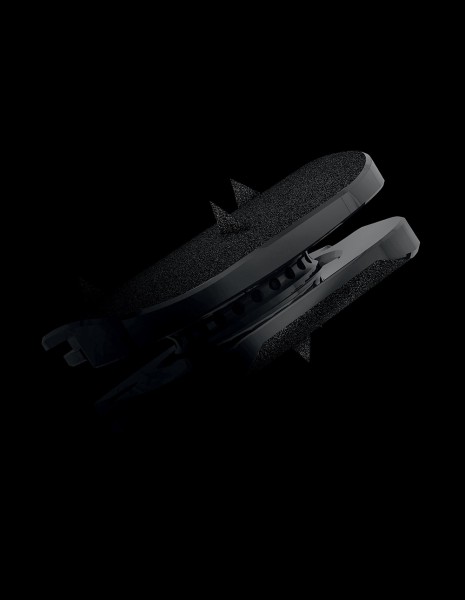
A Biomechanical Analysis of an Artificial Disc With a Shock-absorbing Core Property by Using Whole-cervical Spine Finite Element Analysis
June Ho Lee, MD, PhD, Won Man Park, PhD,y Yoon Hyuk Kim, PhD,y and Tae-Ahn Jahng, MD, PhDz
Spine Biomechanics, 2016
Study Design: A biomechanical comparison among the intact C2 to C7 segments, the C5 to C6 segments implanted with fusion cage, and three different artificial disc replacements (ADRs) by finite element (FE) model creation reflecting the entire cervical spine below C2.
Objective: The aim of this study was to analyze the biomechanical changes in subaxial cervical spine after ADR and to verify the efficacy of a new mobile core artificial disc Baguera C that is designed to absorb shock.Summary of Background Data. Scarce references could be found and compared regarding the cervical ADR devices’ biomechanical differences that are consequently related to their different clinical results.
Methods: One fusion device (CJ cage system, WINNOVA) and three different cervical artificial discs (Prodisc-C Nova (DePuy Synthes), Discocerv (Scient’x/Alphatec), Baguera C (Spineart)) were inserted at C5-6 disc space inside the FE model and analyzed. Hybrid loading conditions, under bending moments of 1Nm along flexion, extension, lateral bending, and axial rotation with a compressive force of 50N along the follower loading direction, were used in this study. Biomechanical behaviors such as segmental mobility, facet joint forces, and possible wear debris phenomenon inside the core were investigated.
Results: The segmental motions as well as facet joint forces were exaggerated after ADR regardless of type of the devices. The Baguera C mimicked the intact cervical spine regarding the location of the center of rotation only during the flexion moment. It also showed a relatively wider distribution of the contact area and significantly lower contact pressure distribution on the core than the other two devices. A ‘‘lift off’’ phenomenon was noted for other two devices according to the specific loading condition.
Conclusion: The mobile core artificial disc Baguera C can be considered biomechanically superior to other devices by demonstrating no ‘‘lift off’’ phenomenon, and significantly lower contact pressure distribution on core.
Key words: artificial disc replacement, cervical spine, finite
element analysis, mobile core.
Latest studies about the product
CERVICAL DISC ARTHROPLASTY WITH THE BAGUERA® C PROSTHESIS: CLINICAL AND RADIOLOGICAL RESULTS OF A 10‐YEAR FOLLOW‐UP STUDY
P. Fransen, D. Noriega, A. Chatzisotiriou, V. Pointillart The European Spine Journal, June 18th, 2023
learn more
